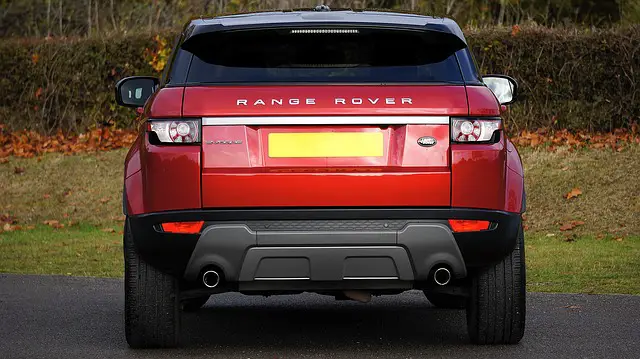The tire aspect ratio plays a crucial role in defining a tire’s performance characteristics, impacting everything from ride comfort to handling prowess. Among the myriad of aspect ratios available, two commonly encountered options are aspect ratios 60 and 55. Understanding the distinctions between these two aspect ratios is essential for drivers aiming to optimize their vehicle’s performance and comfort.
In this comparative analysis, we delve into the nuanced differences between tire aspect ratios 60 and 55, exploring how they influence ride quality, handling dynamics, and overall driving experience. By examining the unique attributes of each aspect ratio, drivers can make informed decisions tailored to their specific driving preferences and needs.
Tire Aspect Ratio Explained

The tire aspect ratio is a numerical representation that describes the relationship between the tire’s sidewall height and its width. It’s expressed as a percentage of the tire’s width. For example, in a tire with an aspect ratio of 60, the sidewall height would be 60% of the tire’s width.
Here’s how to calculate the sidewall height using the aspect ratio:
Sidewall Height = (Aspect Ratio / 100) * Tire Width
For instance, if you have a tire with a width of 225 millimeters and an aspect ratio of 60, the sidewall height would be:
Sidewall Height = (60 / 100) * 225 = 0.60 * 225 = 135 millimeters
So, in this example, the sidewall height would be 135 millimeters.
Aspect ratio impacts several aspects of tire performance and characteristics:
- Sidewall Height: A higher aspect ratio means a taller sidewall, while a lower aspect ratio indicates a shorter sidewall.
- Ride Comfort: Tires with higher aspect ratios generally provide better ride comfort because the taller sidewalls can absorb more road imperfections and shocks.
- Handling: Lower aspect ratio tires often offer better handling and responsiveness due to less sidewall flex, resulting in improved cornering stability and steering response.
- Tread Life: Tires with higher aspect ratios tend to have longer tread life because they have more rubber in the sidewall, which can provide better protection against wear.
- Aesthetic Appeal: The aspect ratio can also affect the appearance of the tire, with lower aspect ratios providing a sportier look and higher aspect ratios offering a more traditional appearance.
Overall, the aspect ratio plays a significant role in determining how a tire performs in various conditions and how it feels to drive on the road. Drivers often choose tires with aspect ratios that align with their preferences for ride comfort, handling, and aesthetics, as well as the specific requirements of their vehicle.
Tire Aspect Ratio 60 vs. 55 Features
| Features | Description | 55 | 60 |
| Comprehensiveness | The numbers 55 and 60 refer to the size of the tire. The first number indicates the width in millimeters, while the second is the height, or aspect ratio, which shows how taller the object is than the width. | A 55-series tire will be more comprehensive than a 60-series tire. | The 60 performs better in sedan models than in trucks |
| Wide | However, they are called the 55 series because their aspect ratio (ratio of the section height to section width) is less than 60. This means they cannot be used on vehicles manufactured after World War II when the standard size became popular. | When the width of the 55 is increased, the ratio of revolutions per kilometer decreases (as long as it remains at 15% or less). | When the width of the 60 is increased, make the revolutions per mile. |
| Stability | Additional aspects to consider are sidewall height, which is shorter on 55-series tires than on 60-series tires. Sidewalls are critical in determining the tire’s contact patch and grip. | The shorter sidewall height of 55-series tires results in a larger contact patch, resulting in more excellent grip and stability. | The sidewalls of 55-series tires are somewhat shorter than those of 60-series tires. |
| A high and wide combination | This value indicates the balance of a tire’s sidewall height to its width and height. | A 60-inch tire should be between 8.5 and 11 inches wide. For a 60-inch tire, the most common wheel and tire size range is 8.5′′–11′′′. | A 60-inch tire should be between 8.5 and 11 inches wide. For a 60-inch tire, the most common wheel and tire size range are 8.5′′–11′′′. |
Tire Aspect Ratio 60 vs 55: Major Comparisons
| Aspect Ratio | 60 | 55 |
|---|---|---|
| Sidewall Height | Generally taller sidewalls | Slightly shorter sidewalls |
| Ride Comfort | Offers better ride comfort due to more cushioning | Slightly firmer ride |
| Handling | Slightly less responsive handling | Improved responsiveness |
| Cornering Stability | Less stable during high-speed cornering | Enhanced stability during cornering |
| Tire Weight | Tends to be lighter | Slightly heavier |
| Fuel Efficiency | May have a slight advantage in fuel efficiency due to less rolling resistance | Slightly higher rolling resistance, potentially impacting fuel efficiency |
| Rim Protection | Provides more protection to rims from potholes and bumps | Less protection compared to AR60 |
| Aesthetic Appeal | Gives a more traditional and classic look | Offers a sportier appearance |
| Tread Life | Generally longer tread life due to more rubber | Slightly shorter tread life |
| Noise Levels | Tends to be quieter due to more rubber cushioning | Slightly higher noise levels due to less rubber |
| Price | Often cheaper due to simpler construction | Slightly more expensive |
| Availability | Widely available for various vehicle types | May be less common for certain vehicle models |
| Off-Road Capability | Offers better performance on rough terrain | Slightly reduced off-road capability |
| Winter Performance | Better traction in snowy and icy conditions | Slightly compromised traction |
| High-Speed Stability | May experience more tire flex at high speeds | Better stability at high speeds |
| Steering Response | Slightly slower steering response | Quicker steering response |
| Performance in Wet Conditions | Offers good performance in wet conditions | Enhanced performance due to wider tread contact patch |
| Rolling Resistance | Generally lower rolling resistance | Slightly higher rolling resistance |
| Overall Performance | Ideal for comfortable daily driving | Suitable for drivers seeking enhanced performance and handling |
Which Tire Size is More Comprehensive, 55 or 60?
As an expert in the field of automotive engineering and tire technology, I can provide an informed overview of tire sizes, particularly focusing on aspect ratios 55 and 60.
While both aspect ratios have their merits, the comprehensiveness of a tire size depends on various factors, including the intended usage, vehicle type, and individual preferences of the driver.
Aspect ratio 55 typically offers a balance between sporty performance and ride comfort. With a slightly lower sidewall height compared to an aspect ratio of 60, tires with AR55 tend to provide enhanced handling characteristics, including improved responsiveness and cornering stability. This makes them popular choices for drivers seeking a more dynamic driving experience, particularly in sportier vehicles or those with performance-oriented suspension setups.
On the other hand, aspect ratio 60 prioritizes ride comfort and road isolation over outright performance. Tires with AR60 feature taller sidewalls, which offer greater cushioning and absorption of road imperfections. This results in a smoother and more comfortable ride, making them well-suited for daily commuting, long-distance travel, or vehicles where comfort takes precedence over sporty handling.
In terms of comprehensiveness, aspect ratio 60 tires may have a slight edge due to their broader appeal across a wider range of driving scenarios. They excel in providing a comfortable and stable ride, making them suitable for various vehicles, including sedans, SUVs, and light trucks. Additionally, their enhanced sidewall height offers improved protection against pothole damage and curb impacts, contributing to overall durability and longevity.
However, it’s essential to consider that the choice between AR55 and AR60 ultimately depends on individual preferences and specific driving requirements. While aspect ratio 60 may offer superior comfort, aspect ratio 55 delivers heightened performance capabilities. Therefore, drivers should carefully evaluate their priorities, driving habits, and the conditions they typically encounter before selecting the most comprehensive tire size for their vehicle.
My Opinion
If you’re looking for new tires, it cannot be obvious to determine which size will be best for your car. Compared to 60-series tires, 55-series tires have somewhat shorter sidewalls. This means that the lower sidewall height of 55-series tires translates into a larger contact patch, which translates into more grip and stability. A 60-inch tire should be between 8.5 and 11 inches wide.
Your 315/60R15 tires provide a 29.9-inch diameter, a 12-to 4-inch section width, also a wheel diameter of 15 inches or more for your truck, SUV, or van. Each tire spins about 675 times per mile, which helps keep you safe on the road.







